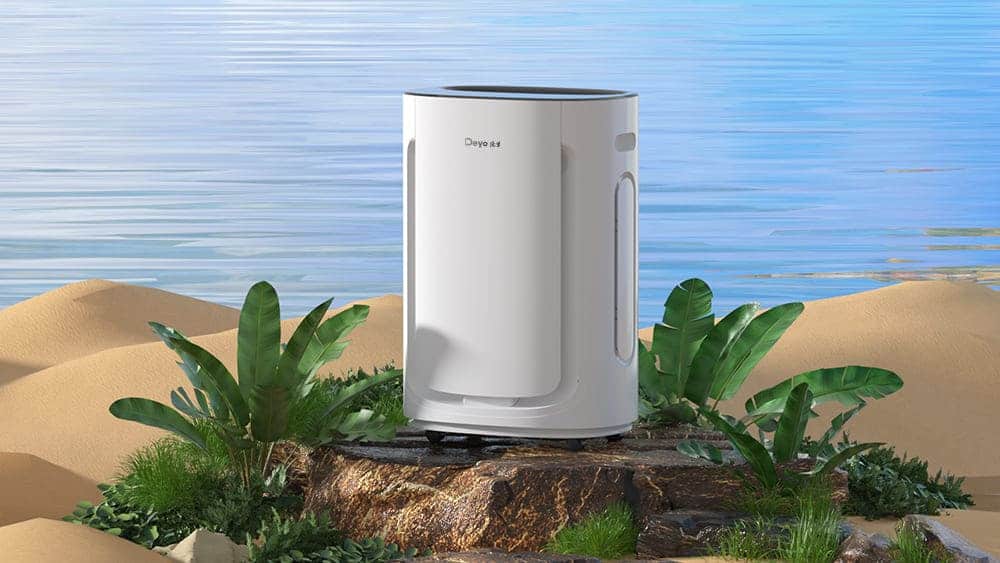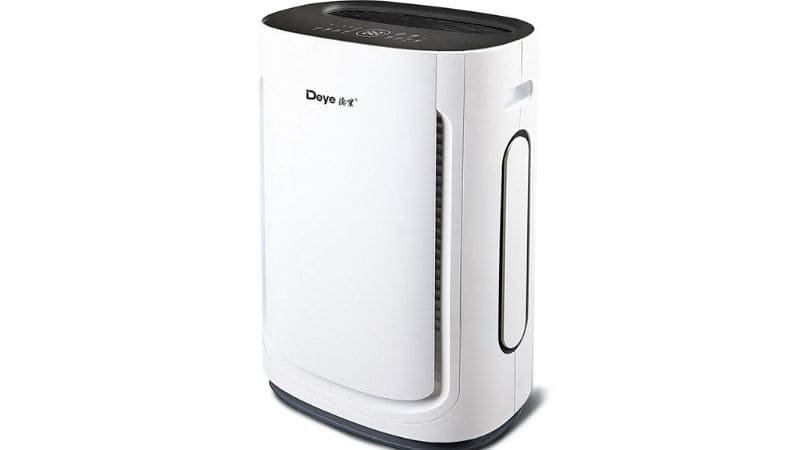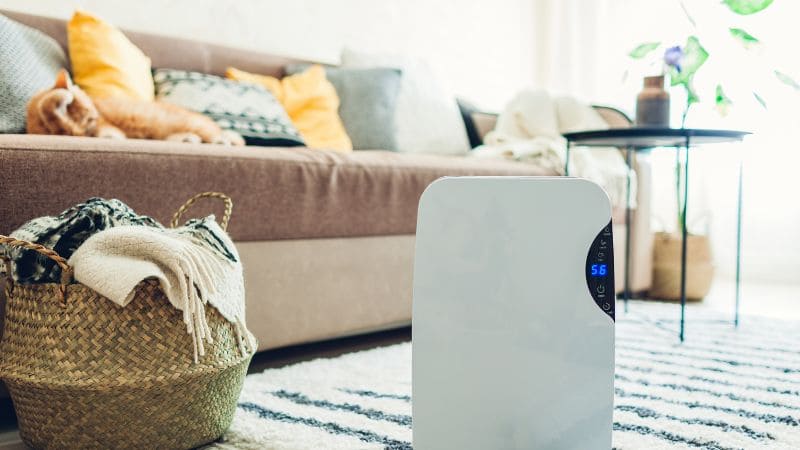
What is Humidity and How to Measure it?
When you hear about humidity, it’s referring to the presence of water vapor in the air around you. Water vapor, being the gaseous state of water, is invisible and directly influences how comfortable you feel. There are two key ways to measure this water content in the air: relative humidity and absolute humidity.
- Relative Humidity (RH): Expressed as a percentage, this quantifies the amount of water vapor the air currently holds compared to its maximum capacity at that temperature. Essentially, it reflects how close the air is to being saturated. Higher percentages can make the air feel muggy, while lower percentages tend to feel drier.
- Absolute Humidity: This is the actual amount of water vapor present in the air, regardless of the temperature, typically measured in grams of moisture per cubic meter of air.
A useful device you can use to measure humidity levels in your home or outside is a hygrometer. It will tell you the exact RH, helping you understand the comfort level of your environment.
Another term closely related to humidity is the dew point. It’s the temperature at which air must be cooled for water vapor to condense into dew. A higher dew point suggests more moisture in the air.
Maintaining a comfortable humidity level is important for your health and the preservation of your home. Keeping track of RH with a hygrometer can guide you to adjust your living conditions before the outdoor humidity level begins affecting your indoor environment.
What Humidity Level is Uncomfortable For You?
Generally, Ideal Humidity Levels for Comfort are between 30% and 50%.
If the humidity is under 30%, you will feel too dry and uncomfortable, and it will be easy to generate static electricity
If the humidity is over 50%, especially higher than 60%, you will face excess moisture, and viruses will easily appear in your surroundings.

Effects of High and Low Humidity
When humidity levels deviate from the comfort zone, you may begin to feel the effects on your skin and health, as well as notice a change in the quality and comfort of the air indoors.
Impact on Skin and Health
High Humidity:
- Makes it harder for sweat to evaporate, reducing the body’s ability to cool itself
- This can lead to dehydration, fatigue, heat cramps, heat exhaustion, and heat stroke
- Increases risk of respiratory issues like asthma attacks
- Promotes growth of mold, dust mites, and other allergens
Low Humidity:
- Can dry out mucous membranes in the nose, throat, and lungs
- Increases susceptibility to colds, flu, and other respiratory infections
- Causes dry skin and lips
- It may worsen certain respiratory conditions like asthma
- This can lead to nosebleeds and sinus issues
Plants Influences
High Humidity:
- Prevents plants from transpiring (releasing water vapor)
- Can promote fungal diseases and mold growth
- This may cause nutrient deficiencies as roots can’t absorb nutrients properly
Low Humidity:
- Increases transpiration rates, causing plants to lose moisture faster
- This can lead to wilting, browning of leaves, and stunted growth
- Promotes spider mite and other pest infestations

Buildings
High Humidity:
- Promotes growth of mold, mildew, and rot in buildings
- Can cause wood to swell, leading to stuck windows and doors
- May corrode metal surfaces and components
Low Humidity:
- Can cause wood to shrink, leading to cracks in floors and furniture
- May increase static electricity buildup
- Allows viruses and bacteria to spread more easily through the air
Indoor Air Quality and Comfort
High Humidity: Indoor air can feel stuffy and make your home feel warmer than it actually is. The situation can escalate with condensation, leading to dampness and the growth of mold and mildew, which negatively impact air quality and can irritate allergies.
Low Humidity: In dry conditions, indoor air can cause wood to shrink and crack, static electricity to increase, and your respiratory system to dry out, exacerbating various ailments such as colds and sinus infections.

Seasonal Variations in Humidity
Seasonal changes greatly affect indoor humidity levels, which can impact your comfort and health. Being aware of how humidity shifts with the seasons is key to maintaining an optimal living environment in your home.
Summer Heat and Humidity
During the summer, high outdoor temperatures combined with high humidity can create an oppressive indoor atmosphere. This combination can feel even hotter than the actual temperature, an effect known as the heat index. You might notice that the air feels heavy and sticky, making it hard for your body to cool itself efficiently. For your comfort, aim to keep indoor humidity levels between 30% to 50% during these months.
- Suggested summer indoor humidity: 30-50%
Winter Dryness and Heating
In contrast, winter brings in cold air that holds less moisture, leading to dry indoor conditions. Turning on the heat exacerbates this dryness, often resulting in static electricity and discomfort. It can affect your skin and respiratory system, leaving you feeling dehydrated. Keeping your home’s humidity level on the higher end, close to 50%, can alleviate these issues and make the cold feel less harsh.
- Suggested winter indoor humidity: 40-50%
Dehumidifier: Solution For Excessive Humidity

Tired of musty odors, mold growth, and allergies caused by a humid environment? If you find the moisture level is over 60%, it is bad for you to live. A dehumidifier can improve your condition, remove excessive vapor, and keep your house dry. It is an electrical appliance that removes excess moisture from the air in a large or small space. After using this powerful appliance, a healthier, more comfortable living environment is provided. By maintaining optimal humidity levels between 30-50%, a dehumidifier prevents mold, mildew, dust mites, and other allergens from thriving. It also protects your home from moisture damage to walls, floors, and belongings. Easy to operate and energy-efficient, a dehumidifier is a wise investment for any household. You can regain control over air quality with the moisture-removing power of a top-rated dehumidifier.
Indoor and Outdoor Dehumidifier
Indoor Humidifiers
- Ultrasonic Humidifiers:
These humidifiers use high-frequency vibrations to create a cool mist. They are relatively quiet and energy-efficient. Suitable for small to medium-sized rooms. - Evaporative Humidifiers:
These humidifiers use a fan to blow air over a wet wick or filter, causing the water to evaporate into the air. They are inexpensive to operate but can be noisy due to the fan. Suitable for larger rooms or whole houses. - Warm Mist Humidifiers:
These humidifiers heat water to produce a warm, soothing mist. They can help temporarily relieve cold symptoms but require more energy to operate. Suitable for small to medium-sized rooms. - Whole-Home Humidifiers:
These humidifiers are integrated into a home’s HVAC system and can humidify the entire house. They are more expensive but provide consistent humidity control throughout the home.
Outdoor Humidifiers
- Misting Systems:
These systems use high-pressure pumps to create a fine mist of water droplets, which can increase humidity in outdoor spaces like patios, greenhouses, or outdoor dining areas. - Evaporative Coolers:
These devices work by pulling outdoor air through a wet pad, causing evaporation and increasing humidity while also providing cooling. They are commonly used in dry, hot climates. - Foggers/Misters:
Similar to misting systems, foggers and misters create a fine mist or fog to increase humidity in outdoor spaces like gardens, nurseries, or outdoor events. - Humidification Systems for Greenhouses:
These systems are designed specifically for maintaining optimal humidity levels in greenhouses, which is crucial for plant growth and health.
When choosing a humidifier, consider factors such as the size of the area you want to humidify, your budget, noise level preferences, and any specific features you may need (like warm or cool mist). Additionally, proper maintenance and cleaning of humidifiers are essential to prevent the growth of mold and bacteria.
Frequently Asked Questions
What are the differences between a dehumidifier and an air conditioner?
A dehumidifier is to remove excess moisture or humidity from the air. It does not significantly lower the air temperature but reduces the amount of water vapor in the air, making the environment feel drier and more comfortable.
An air conditioning system cools the air temperature in a room or building. It removes heat from the indoor air and transfers it outside, lowering the temperature. Dehumidification is a byproduct of the cooling process.





